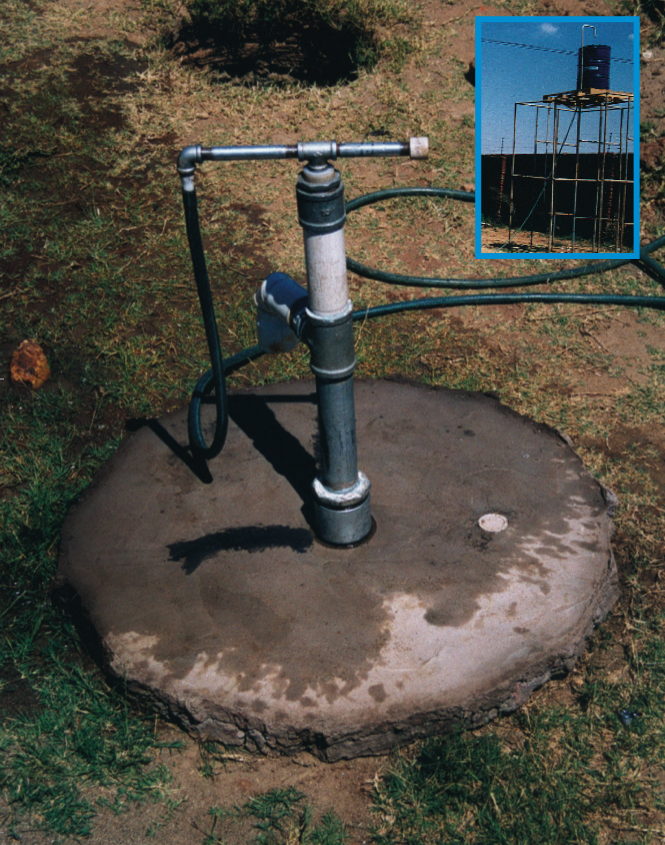Deep well pump
Most direct action pumps such as the Blair pump are not fit to pump water higher than a few meters above ground level. New models such as the EMAS pump can pump up water to tanks as high as 30 m. These pumps are very popular for domestic use, as shown by 20,000 water systems in Bolivia. The pumps are made from local available PVC tubing and the valves are made with marbles. PVC pumps are used in Malawi and Brazil and many other countries in combination with water storage tanks.
Deepwell pumps
In general handpumps for rural water supply are piston pumps such as Indian MarkII, Afridef, Volanta, Nira and others. Information on these pumps can be found on the website www.rwsn.org. New developments can be seen at www.handpumps.org. and www.watsan.org.
| Advantages | Disadvantages |
|---|---|
| Suitable for domestic use. |
Capacity
40 litres / min from 10 meters depth.
Costs
- US$ 20-120 depending on model.
Applying conditions
- Numbers: 50,000 in Nicaragua, 20,000 in Mexico, Honduras, Guatemala, Ghana, Zimbabwe, Tanaznia, Senegal.
- Range of depth: 1-35 meter (60 m with two cranks).
- Application Communal wells, houshold, irrigation.
- Cost of introduction: US$ 10,000-20,000 per project, including 20 pumps, engineering and hands-on training. US$ 60,000-100,000 per project, including 1,000 pumps, production workshop and hands-on training.
Rope pump building manual
PRACTICA foundation and the Technical Training Programme of the ETC Foundation (TTP/ETC) have put together a really excellent manual on how to build rope pumps (PDF, 2.5 Mbyte). It is an 86 page long document with detailed instructions.
External links
- Evaluations www.irc.nl
- Africa www.pumpaid.org
- General info www.ropepump.com
- How to build www.ropepumps.org

